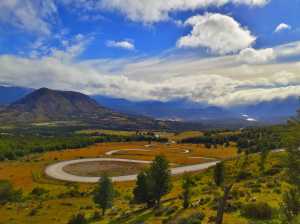
After travelling for 13 months through 28 countries on countless buses, trains and planes we decided it was time for a change. We were no longer going to continue roughing it through Central America, instead we flew from Belize City to Santiago, Chile (US$900pp) with the ultimate goal of renting a camper van and road tripping the length of the country.
Selecting Chile was made easy due to the fact that it is one of the safest countries in South America, has some of the best infrastructure, is easily navigable and Keiran has family based in Santiago and Limache who lent us the majority of our camping equipment.
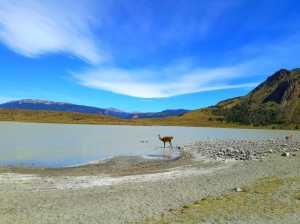
Although Chile tends to be a country not very high on many people’s list of places to visit, there are many reasons why it should be and why renting a campervan is the best way to see this uniquely beautiful country.
The following is not a list of every spot that we stopped at during our 1 month driving through the Chilean Patagonia, instead it is a list of the places that are necessary stops or places that we highly recommend visiting and the activities that are available nearby.

Santiago
The modern city of Santiago has plenty to offer tourists and exploring the city is made even easier with the use of the metro system (single use tickets are no longer available). Santiago is also located within the close proximity to a few free national parks (Valle Del Yeso) which offer many hikes, swimming opportunities and a nice place for a choripan lunch. Each is accessible using a combination of metro and bus.
For people interested in heading south straight away Santiago is an essential stop if your intention is to rent a make- shift campervan like we did, as Santiago offers the only Chilecarrental office where 2 types of vans are available.
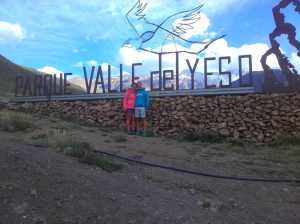
Santiago is not a city you need to rent a car for, we recommend renting your van once you are ready to leave. As far as sleeping within the city limits we do not recommend camping, even if it is in a campervan. Parking is an expensive, nightmarish situation with no consistency and there are risks off break-ins like in most major cities. We booked an apartment with Airbnb, get $41 off your first booking here.
Once you are ready to hit the road the town of Til Til, a small detour is required, offers the best spot to pick up locally produced road side fruit and veggies for a great price. Supermarkets also tend to be cheaper outside of Santiago, and Unimarc seamed to be the most popular supermarket for local hitchikers on a budget.
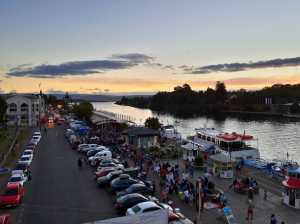
Valdivia 854kms from Santiago
The coastal city of Valdivia is the capital of Los Rios and has a very strong German influence as many people fleeing Germany after Hitler’s downfall made their way to Chile’s Southern coast.
Activities
As a result Valdivia’s most well known feature is the Kuntsmann Brewery on the outskirts of the city. Here you can enjoy a pint for around CHP3,000 or take on their 12 sample tray for CHP6,200, they also offer an overpriced but ricissimo menu including luxurious burgers and schnitties, or raw beef tartar for fancier palates.

The city also has a very generous selection of pubs and bars along the main streets, where the beer prices are surprisingly cheaper. There is also a very affordable fish and fruit market, Feria Fluvial, where we picked up 3kg of mussels for only CHP2,000 and cooked the whole lot in the park. We did manage to attract a small number of wasps who have apparently developed a taste for seafood.
The towns fish market also attracts a large number of sea lions who can be seen lounging around the river front at any time of day.
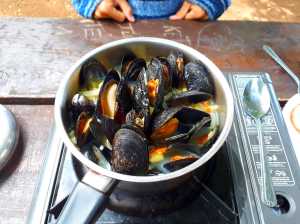
Camping 1 night in the area
For camping we drove around 20km out of Valdivia towards the coast to camp in a large open field overlooking the beach. By day we explored the beach and watched the locals harvesting the seaweed (cochayuyo). The town of Niebla, on the way to our campsite, is where you can catch a ferry to the island of Mancera.
Handy Tips
• The Unimarc has decent prices for most supplies that need restocking.
• We found the price of petrol to be decent along the roads leading into the city.
• There is a very expensive tollroad if you take Route 202 to get in and out of the city which joins onto the Route 5 (CHP4,000+).
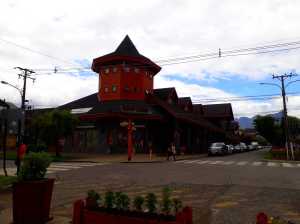
Pucon 789kms from Santiago
The very well known town of Pucon sits at the base of the 2847m high Volcan Villarrica and is ideally situated next to Lago Villarrica. Pucon is a very touristy town and for good reason, it is very modern and reminded us a lot of Jasper in Canada.
Activities
From town you can take a tour to the rim of the volcano and look into its pit filled with flowing lava (CHP50,000pp). You can go white water rafting on class 3, 4 and 5 rapids (starting CHP15,000pp including video footage) as well as swim at the black pebbled beach when the weather permits.

A short distance from town you can hike to the smaller volcano craters for free, but it does require a car to reach the start of the trail (6km return). With your camper you can also access the Parque National Huerquehue for hiking, swimming and picnicing (entry is CHP5,000pp plus CHP2,000 for parking). We spent the day slowly hiking the Los Lagos trail (7km return) which provided us with amazing views of pristine lakes surrounded by the unique monkey puzzle trees. Pack a picnic lunch for the end of the trail.
Once you have done your hikes the area offers access to many thermal springs, for a well earnt dip, most within a short drive of Pucon. We chose Termas los Pozones for CHP8,000pp for 3 hours of access, however leaving after your allocated time seems more of an honesty based system.
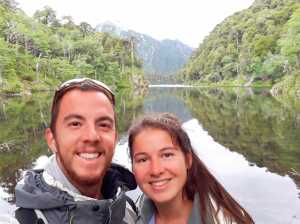
Camping 3 nights in the area
For camping we spent one night close to Pucon where there is free parking down by the boat docks just on the edge of town. Fortunately we had access to a port-a-loo and it was the only free parking we found within a close proximity to town.
For a more relaxing night sleep we spent a night wild camping near Lago Caburgua which is frequented by many local families, just pull up and pick your spot, there is no access to toilets at this sight.
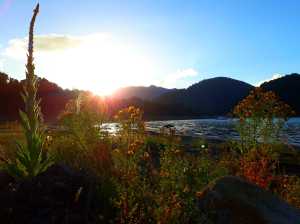
On our third night we were able to camp in the upper car park of our thermal springs and had access to the toilet block which was open all night.
Handy Tips
• In Pucon town Lider supermarket offers free access to bathrooms and cheap groceries.
• Doite is the best spot to restock your cooking gas canisters (CHL990).
• Most roads around the major attractions are paved and well maintained.
• The access road to Lago Caburgua requires the use of a decent 2km pebble road.

Frutillar 999kms from Santiago
Frutillar is another small town with a rich German influence situated on North West coast of Lago Llanquihue. On a good clear day in Frutillar Bajo you can get a great view of the 3 volcanoes (Volcan Osorno, Volcan Calbuco and Volcan Puntiagudo) on the opposite side of the lake.
Activities
There is a ‘budget’ friendly foodtruck yard where you can sample all of Chile’s great cheap eats such as empanadas, choripan, salchipapa and completos. For those craving something sweeter this town is full of decadent home made German style cakes and pies.
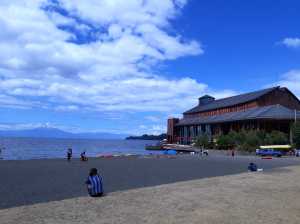
The opera house in town is a modern architectually designed building right on the water front offering great photo opps with the surrounding volcanoes. There are also a number of German style mansions that line the leafy streets, some with onsite museums.
Camping 1 night in the area
In order to find our ideal camp spot we drove 30kms north-east around the lake to find a completely private pulloff with enough space for one camper. The spot is located down a not-so-steep side road which is easy to navigate. The side road is located opposite to an abandoned farmhouse and is nicely sheltered beneath eucalyptus trees.
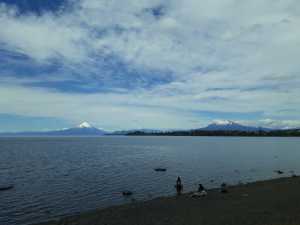
From the camp spot you have direct access to the cool fresh water of the lake. The pebbles can be hard on the feet but you have unbeatable views of the surrounding landscape. We counted the peaks of all three nearby volcanoes.
Handy Tips
• The town is very tourist friendly and provides ample free parking along the beachside road.
• There are no large supermarkets in Frutilla Bajo or free public bathrooms that we could find.
• The highway fuel on Route 5 is much cheaper than anything you might find in town.
• The road that leads you around the lake changes from sealed to dirt once you leave Frutillar Bajo.
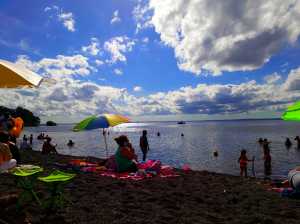
Puerto Varas 1020kms from Santiago
The town of Puerto Varas is situated on the South West coast of Lago Llanquihue and surrounded by volcanoes, namely Volcan Osorno at 2652m. We did not spend much time in the overpriced town (parking is charged per minute at CHP25) instead we spent our time exploring the surrounding area.
Activities
The black pebbled beaches east of town are very popular with local families during the day, the water is cold but the days can be very hot and are worth a swim. For more private beaches a drive around the base of Volcan Osorno will take you to Petrohue and further onto Lago Todos Los Santos which is a great spot to spend the day enjoying the water, beware that there are signs that prohibit swimming due to ‘dangerous temperatures’, apparently knee depth is acceptable.

Once the sun starts to fade you can drive to the Ski area of the volcano at around 2,000m, where on a clear day you get amazing panoramic views of the surrounding lakes as the sun sets. From the ski area you can take a few easy walking trails around the volcano as well as a small chair lift (CHP9,000).
There are many options for day hikes in the nearby Parque Nacional Vicente Perez Rosales (CHP1,500pp) and Parque Nacional Alerce Andino that you could easily spend weeks in this area doing.

Camping 2 nights in the area
Our first night we wild camped at the local black pebbled beach right on the water, be aware there are no public toilets. Unfortunately this is a popular drinking spot by night and some visitors tend to have little respect for the property of others and terrible taste in music. A police car did come around at midnight to shut down any parties.
For our second night we camped at the ski area on Volcan Osorno where there is large carpark and restaurant, the sunset is worth not having access to a free toilet (CHP500). Bring warm clothes as it can get cold and very foggy at night.
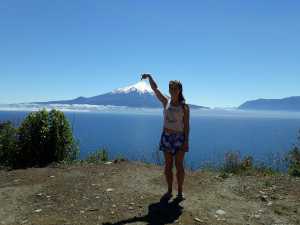
Handy Tips
• The fuel in Puerto Varas is expensive in comparison to the petrol stations on Route 5.
• The road from Puerto Varas to Petrohue and all the way up to the ski area is paved and well maintained.
• The road leading to Lago Todos Los Santos is loose gravel.
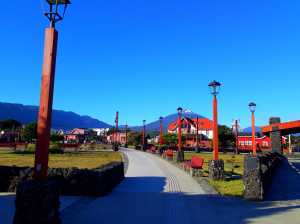
Hornopiren 1143kms from Santiago
Hornopiren is a small harbour side town where a ferry is necessary if you wish to venture further south (CHP39,200), plan in advance as next day ferries are hard to come by if you have a car especially during summer, you can book online. Fortunately our next available option was within two nights so we spent our time exploring the surrounding areas.
Activities
Just outside of town there is an easy not so well maintained 7km hiking trail if you are willing to get a little bit muddy. Along the trail access road there are many crystal clear lakes to swim in along the way, the water is glacial fed and very ‘Chiley’. In addition there is a longer hike that takes you to the nearby Volcan Hornopirén.
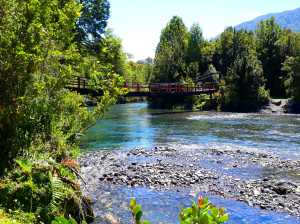
Camping 2 nights in the area
We camped both nights down by the harbour front park where there are grassy areas, ample seating, a playground and an outdoor gym, checkout our Staying fit in Chile video on Youtube here to kickstart your own fitness regime. There were multiple other campers doing the same.
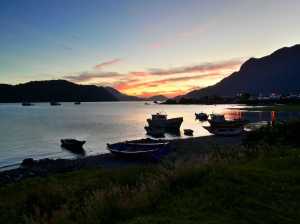
Handy Tips
• There is free access to toilets behind the Ferry Agency office.
• There are two types of large biting flies in the area. They’re attracted to dark coloured clothes and rico picnics featuring Keiran’s paella.
• From the Ferry Agency you can book any future ferries you might need to take further down the track.
• The ferry to the island of Chiloe needs to be booked a couple of weeks in advance, check out the website here.
• You can pay for tickets with card in person at the agency.
• Once you leave Puerto Montt the road to Hornopirén is made up of loose gravel road and you may get stuck behind the odd truck.
• In Hornopirén your Movistar chip will have reception and 3G internet.
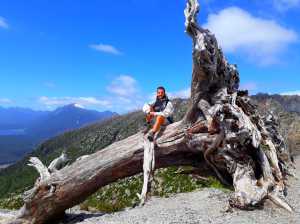
Parque Pumalín 1272kms from Santiago
Parque Pumalín was easily one of our favourite places in all of Patagonia and is possibly the greenest and mossiest place we have ever seen. From when we got off the boat at Caleta Gonzalo right up until we got our next ferry in Chaiten, our days were filled with hiking, at least 3 trails per day. It was also in Parque Pumalín that we met the first of our many hitchhikers, who we kept running into along the road through the park.
We spent 3 full days travelling through the park from Caleta Gonzalo to Chaiten and wish we could have spent longer. On our way back north we spent another night in order to visit the nearby glacier before catching our ferry to Chiloe.
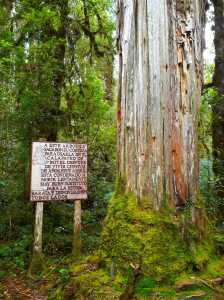
Activities
The park offers visitors amazing waterfalls, ancient alerce trees, low lying glaciers, large fresh water lakes and the infamous Volcan Chaiten which erupted in 2008 causing the closure of the park for many years, the volcano is now accessible by foot. The senderos range from short 2km waterfall hikes to the steep up hill climb to the peak of the volcano made even harder by the constant exposure to the sun, the hikes we recommend are:
• The 6km return steep climb to the Volcan Chaiten Crater takes you up the very exposed western side of the volcano. The tree graveyard at the top offers great views of the steaming volcano.
• The 22kms return trip to the base of the Michinmahuida Glacier near El Amarillo is an easy flat walk across open plains and dense forest. There are biting flies everywhere.
• The 1.4km return hike along a well maintained board walk to see the ancient alerce trees. The huge trees are a sight to behold.
• The 6km return trip along Sendero de las Cascadas will take you through dense moss covered forest, across running streams and scrambling over huge boulders until you reach the base of the towering Waterfall.

The drive through the park gives you an eerie feeling when you reach what remains as a bare landscape following the eruption ten years earlier. The skeletal remains of the alerce forest provides guests a glimpse into the destructive forces of nature. Nonetheless the touches of green undergrowth suggests rebirth of this recovering landscape.
Camping 4 nights in the area
During our visit to Parque Pumalín we camped in the well maintained designated camping areas which for campervans is completely free, for now. For people in tents the cost is CHP3,000pp. The campsites provide access to toilets, cold showers and an array of shorter hiking trails.
One night we also camped on a little stone beach just north of Chaiten so that we could catch our early morning ferry that in the end was almost 5 hours late due to difficult conditions at sea. There is much nicer wild camping at the Playa Santa Barbara 11km north of town.
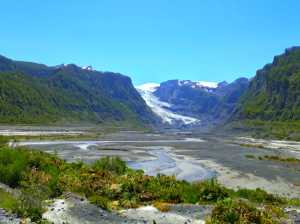
Handy Tips.
• If your time is limited we recommend prioritising Pumalín National Park, we spent a total of 4 days exploring the park and still didn’t see everything on offer.
• From Chaiten we had to take a free ferry to venture further south as the road from Chaiten to La Junta was closed due to recent landslides, check this in advance.
• The tiendas and fuel stations in Chaiten are kind of pricey.
• There is free access to toilets at the Ferry Agency office in town.
• Free access to the tourist info kiosk Wifi on the edge of town.
• Your Movistar chip will have reception and 3G internet access.
• The ferry ride from Chaiten is a sickening one at best so pack medication if you are prone to sea sickness.
• There was an onboard canteen selling refreshments and snacks but unless you want to splurge CLP2,000 for a cheese toastie remember to pack plenty of food!
• 1L thermos refills cost CLP500 for all you maté fiends.
• The road through Parque Pumalín consists completely of gravel.
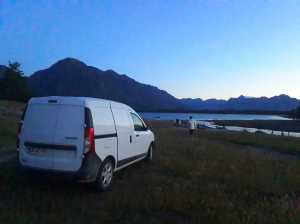
Puerto Raul Marin Balmaceda 1509kms from Santiago
Due to our ferry from Chaiten running behind schedule we did not get into the port until late afternoon so decided to spend the night on the beach of Puerto Raul Marin. By the end of the ferry we had also managed to accumulate our 4th hitchhiker.
During our camping at the local beach on two separate occasions we experienced one beautiful sunset and one amazing thunderstorm so be prepared for any weather and a swarm of mozzies dense enough to strip your bones of all flesh. Fires usually ward off the mozzies but thunderstorms ward off the pyromaniacs. Foragers can also look for wild strawberries but consider the risk of Hanta virus and wash fruits well before consumption.
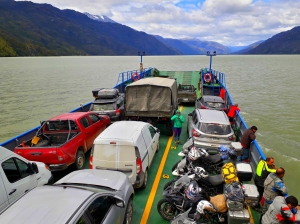
Puerto Raul Marin was a necessary stop for us during our visit to Patagonia, however it is not worth the detour if the carretera is operating as normal. We would recommend spending your time in Futaleufú doing white water rafting. There are not many shops or restaurants in town so stockup beforehand if you plan to spend the night.
The road leading down to the beach is made up of compact sand. The road that leads from the port back to the Carretera Austral is a narrow gravel road with one free ferry crossing, the side of the road is covered with rosehip bushes which can leave a nasty scratch in your car.
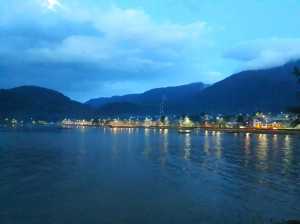
Puerto Cisnes 1567kms from Santiago
This small harbour town is famous for their Annual Minga which involves the whole town coming together to move one lucky person’s house, literally drag it over the bay and land with ropes until they find a suitable location (late January). There was once a reason behind the local minga but nowdays it is done in remembrance of the good old days and an excuse for a great party that welcomes one and all.
At the end of the move there is a generous feast of all-you-can-eat fried fish with fried bread (sopapillas) and all you can drink boxed wine from a communal leather flask as well as live music and a late night disco, very popular with all the Chilean hitchhikers who love to bailar!
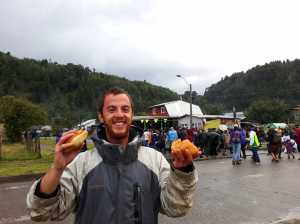
This town offers a cheaper ferry service to Chiloe (CHP94,000 with car and 1 passenger), a nice sandy beach popular with locals about 3km out of town and is often referred to as the rainy town so come prepared for drizzle. The town is a bit of a detour off the Carretera Austral and unless the festival is on or you are catching the ferry it is normally a sleepy little town with little draw for tourists.
Camping 2 nights in the area
We camped two nights on the beach along with many other families, we read that this is not normally allowed for tent campers but it was obviously permitted during the festival weekend. The smell of open pit BBQs was enough to make us organise our own parilla.
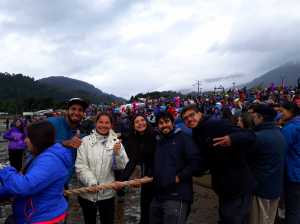
Handy Tips
• At the beach there are free cold showers for those brave enough and cheap toilet access (CHP200).
• During the festival supermarkets and restaurants were hard to come by as everybody was busy celebrating.
• There were plenty of makeshift vendors selling street food snacks like ceviche and empanadas.
• Word of warning: definitely do NOT park your car along the route that the house will be pulled as the festival goers will collaboratively use all their might to pick it up and move it with little consideration for the damage done to your vehicle’s suspension.
• The festival is an extra celebration for all the local hitchhikers, so be prepared to pick up a few or get a lot of sad faces as you leave town.
• The road from the Carratera Austral to Puerto Cisnes is a combination of gravel and sealed.
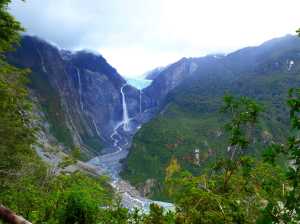
Parque National Queulat 1502kms from Santiago
The national park is most well known for its large hanging glacier, Colgante which feeds into Laguna Témpanos. The national park is situated 22kms after Puyuhuapi and the drive takes you around the scenic interior fiordlands. The cost of entry into the park is CHP5,000pp and camping is an additional CHP5,000pp with hot showers available (prebooked campsites are advisable).
Activities
The most popular hike to the glacier is an easy 6km return trail along a narrow path which is littered with moss covered trees and other tourists. The end of the path opens out onto a small viewing platform, with space for 20 people, which again is full of tourists enjoying the view whilst eating their lunch. The views of the glacier are worth the constant struggle to share the path.
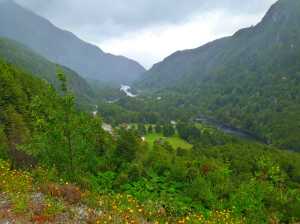
In addition there are many other walking trails throughout the park which offer an escape from the main crowd drawn towards the glacier and these are definitely worth a look in. One alternative trail leads down to Laguna Témpanos and offers a different view of the hanging glacier with less crowds.
Camping 1 night in the area
We spent one night wild camping just outside the park boundaries in a small pullout just off the entrance road with enough space for one camper. We didn’t see many other options so get in early. We did wake up the next day with a flat tyre so take care.
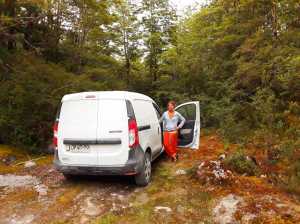
Handy Tips
• If you setup camp within the park boundaries the rangers will ask you to move when they do their nightly checks.
• There are free toilets within the national park and sometimes access to a hot shower next to the carpark.
• The road from Puyuhuapi consists of loose gravel road, much more traffic and one free ferry crossing.
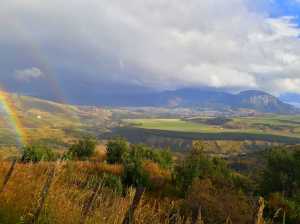
Coyhaique 1713kms from Santiago
As the largest city along the Carretera Austral, Coyhaique offers almost anything you would need to restock your supplies. The city is also a great place to take some time to catch up on what has been happening in the real world with the use of the free wifi provided at the tourist info office.
Activities
From Coyhaique there are many tour opportunities including the very expensive San Rafael Glacier multi-day boat tours. We did not partake in these tours so can not make any personal recommendations. From town it is also a short drive to some surrounding lakes, including Lago Elizalde, which on a good day would be ideal for swimming, unfortunately we were not so lucky.
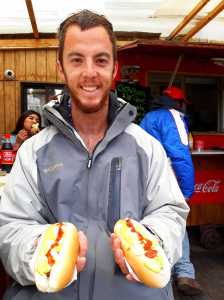
Camping 2 nights in the area
We used a popular camping spot about 3km out from the center of town located down by the river just before the bridge. There were at least 3 other campers using this spot on both nights we stayed there.
Handy Tips
• We used Unimarc for our groceries, including a large cooked pork knuckle.
• Doite for our gas supplies.
• There are plenty of places to get cheap streetfood like completos (CHP1,000) or empanadas (CHP500) all over the city.
• Free parking close to the center of town is hard to come by but it is possible to get within 1km.
• The petrol prices in town are the most reasonable we found along the Carretera Austral, so fill up the tank!
• The road from Parque National Queulat is made up of a combination of newly sealed road and winding loose, pot holed gravel road.
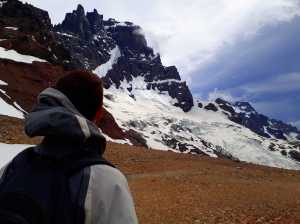
Villa Cerro Castillo 1809kms from Santiago
The village situated at the starting point of the trek to the Cerro Castillo mountain mainly consists of make-shift camp grounds in the backyard of local houses. The drive from Coyhaique to Villa Cerro Castillo provides amazing scenery from the multicoloured mountain range as the you delve deeper into the valley.
Activities
The main draw for tourist is the steep 7km climb (one way) to the viewing point of the castle-like rock formations and the glacial fed lake at its base. There are two ‘entrances’ to access this trek, the main entrance includes an entrance fee of CHP10,000pp as the initial section is through the private property of a local family before it takes you into the national park.
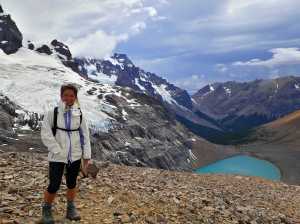
The second entrance is an extra 7km drive past the first entrance down a steep hill covered in loose rocks, a 4WD is recommended, checkout our video on Instagram, but the cost of entry is free. From the second entrance you need to add an extra 7km to your hike in order to return to your car if you do the loop. The hike is a medium to difficult climb to the viewpoint, especially when the wind picks up, so a rain/windproof jacket is essential. Scrambling over loose shale is a necessary part of this climb.
For those properly prepared there is a 4 day hike that takes you to multiple galcial fed lakes located within the park. Along this hike there are well marked designated camping spots where you can find a flat, rock-free space to set up your tent. The end of this trek is also the second entrance mentioned above.
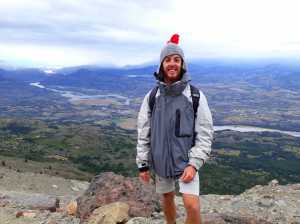
Camping 1 night in the area
Wild camping is not permitted around the town and a friendly council member will come by at night and politely ask you to move into one of the paid for camping grounds (starting from CHP3,000pp). We chose to wild camp closer to the second entrance on the side of the road just after you cross a small timber bridge, there is not much space for bigger rigs but there is also not much traffic.
Handy Tips
• There are no free toilets in town or close to the second entrance, there are two dry toilets just past the main entrance.
• There is Movistar reception close to town, however there is no reception at the second entrance.
• The road from Coyhaique is made up of newly sealed road and loose gravel road, fortunately the best part of the drive is smooth bitumen.

Puerto Rio Tranquillo 1929kms from Santiago
Puerto Rio Tranquillo is a small town situated directly on the edge of Lago General, a large lake that passes between Chile and Argentina. The town is basically set-up to provide tourists with access to the lake’s activities, the main one being a boat trip to the caves of Capilla de Mármol (CHP10,000pp).
The Marble Caves are a very beautiful rock formation carved by the water which create a smoothed marble effect enriched with yellows, blues and greens. The pinnacle of the tour is when you arrive at the huge rock protruding from the water appearing to balance precariously on top of a tiny point, it is here you can navigate through some of the larger caves if you are on a kayak tour (CHP45,000pp).
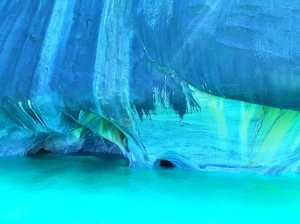
There are also day trips to the nearby Moreno Glacier where you can take a walk on the ice for CHP75,000pp. There is evidence to suggest that these tours accelerate the melting of these glaciers and therefore contribute to climate change.
Camping 1 night in the area
The drive from Villa Cerro Castillo provides you with numerous options for wild camping. We chose to camp on a small pullout located 20kms before the town of Puerto Rio Tranquillo with a great view over the turquoise blue water. There are many spots along the stretch of road leading into town which offer similar waterfront views, just take your pick.
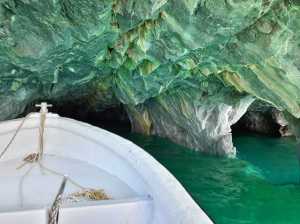
Handy Tips
• There are no free toilets in town but the tour agency provides access to facilities, make sure to use it before the bus tours arrive.
• We did not do much price comparison but it appeared that most tours were around the CHP10,000pp.
• We paid for our tour with card.
• The fuel in town is expensive and we did not fill up here.
• During our visit the road that made its way around Lago General consisted of gravel road apart from a small patch of sealed road that extended through the town of Puerto Rio Tranquillo.

Chile Chico 2090kms from Santiago
The inclusion of Chile Chico is more about the journey than the destination, the trip around Lago General from Puerto Tranquillo was one of the most scenic drives we have ever done. During our visit the camino was undergoing a lot of road works meaning there was plenty of opportunity to get out and take photos, but this stretch of ‘highway’ was mostly single lane dirt road.
Activities
Just after the T intersection leading to Chile Chico we found a great spot where we could pullover and have a swim in much calmer waters than we experienced in Puerto Rio Tranquillo.
The town of Chile Chico is a great spot to get your stone fruit fix, especially on cherries which were priced at 2kg for only CHP1,500. The main plaza in town is also surrounded by an orchard of various stone fruit trees just waiting to be picked by very welcome passers-by.

The actual drive stretches 161km along Lago General’s South Coast where you can get unobstructed views over the lake from nearly every turn. On a clear sunny day the views are jaw dropping and only get better as you approach Chile Chico. The road is very windy and narrow with many shear drops so take care and share the driving.
Camping 1 night in the area
During our one night visit we wildcamped down by the lake, just on the east side of town. Unfortunately it was extremely windy and the conditions resembled a rough beach.
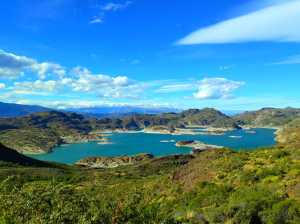
Handy Tips
• The tourist information center offers free toilets just make sure to get there before the 2 hour lunch break.
• We were in town during both a motor cross event and a rodeo so had easy access to our choice of port-a-loos.
• From Chile Chico you have the option of entering Argentina to continue your South American adventure.
• The excess number of road works gives us hope that the road is no longer a dirt one but instead a newly sealed road made to match the scenery of the drive.
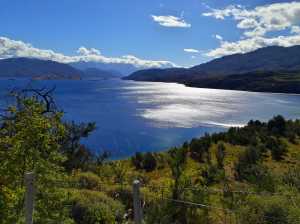
Cochrane 2029kms from Santiago
Cochrane is a small local town located in close proximity to a couple of lakes, volcanoes and plenty of hiking trails. The town of Cochrane also offers an artesanal market where you can buy plenty of locally, handmade woolly socks and beanies at a reasonable price, a beanie will set you back CHP5,000.
In town there are a few supermakets, convenience stores serving overpriced soft serve icecream (CHP1,300) and one butcher that didn’t have any meat during the whole time we visited. There are also plenty of pubs serving the local delicacy called chorillana (CHP11,000 for a 2 person serving at cerveceria La Taberna Tehuelche).
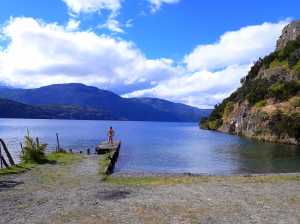
Camping 2 nights in the area
We camped our first night close to the town, next to the town’s abattoir which wasn’t the best option due to the excessive number of street dogs barking throughout the night.
On our second night we drove out of town (16km) to one of the beaches on Lago Cochrane, which thanks to early morning rain we had all to ourselves. This was one of the best camping spots we found and was a great place to swim once the sun came out. We even saw a king fisher and some snobby swans.
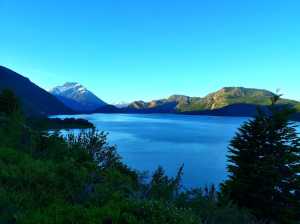
Handy Tips
• There are free toilets situated in the artesanal market building, one at each end of the building.
• The most reasonably priced fuel in town was the Petrobras that is on your way into town.
• This is the last place you can fill up before you reach Villa O’Higgins, a further 231kms.
• The road consists of loose gravel until you get into town where you will find mostly sealed roads.
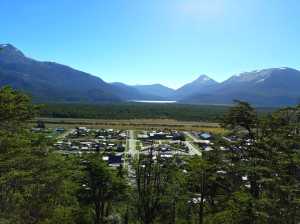
Villa O’Higgins 2260kms from Santiago
Villa O’Higgins is the end of the road for the Carretera Austral due to the Southern Ice Field blocking the path so make sure to take your photo with the two signs down at the ferry docks. It is possible to go further south towards El Chaiten, Argentina but by foot as there are passenger ferries only. The town offers artesanals, convenience stores, restaurants which did not appear to open during our visit and a Copec petrol station which was a surprise as we had read otherwise.
Activities
There are plenty of walking trails that take you to the miradores that are scattered all along the hillside. If you walk all the way to the furthest one you will have a great view over the surrounding mountains and valley. There is another trail that starts just on the side of the bridge as you head towards the ferries (entry CHP2,000pp but requires you to call the owner of the property) that takes you through a mossy forest until you reach the lookout point where you can see the volcanoes and surrounding rivers and lakes.
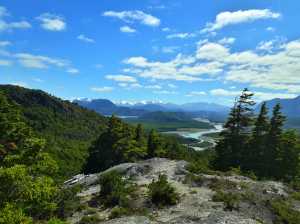
From Villa O’Higgins there is also a boat tour that takes you to see the O’Higgins Glacier (CHP90,000pp), unfortunately during our visit the seas were too rough or the boats were out of action and we were unable make this trip.
Camping 1 night in the area
We camped on the south side of town in a boggy marsh area where the cows are grazed, be aware that the cows may lick your car windows if they can see/smell food. Cuteness overload.
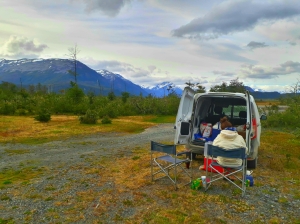
Handy Tips
• The town is a nice way to end the Carretera Austral but requires no more that a one night visit unless you are heading further south.
• The road from Cochrane consists of loose gravel road, a free ferry crossing and for us one very smelly hitchhiker.
• If you wish to go further south with your car to Punta Natales you can take a very expensive 4 day ferry through the southern fiords from Caleta Tortel, a 140km drive North-west from Villa O’Higgins, with Navimag Ferry.

If you enjoyed reading our Chilean Patagonia Itinerary then checkout our other post How to get the most out of your campervan in Chile
Wow.what a trip. I travel but mostly in the states. I like road trips alot!!! Looking forward to your other travels. Wow.
LikeLike
Thanks for checking out our blog!
LikeLiked by 1 person
This looks amazing! It makes me even sadder that we weren’t able to visit Chile while we were living in South America, but there’s always next time! And thank you for taking the time to visit our blog.
LikeLike
Hi there, thanks for checking out our blog. The Chilean Patagonia was one of our trip highlights and I don’t think there is any better to experience it than in a campervan.
LikeLike
That is a beautiful and exhaustive list. Chile is on my mind because it has so much to offer, yet is off the charts, as you rightly pointed out. Thanks for the follow. I am looking forward to browsing your posts. Cheers.
LikeLike
Thanks for checking out our blog. Chile was exhausting but well worth the effort. We ended up living in our van for over 2 months.
LikeLiked by 1 person
What stories you must have! 🙂 Living in a van is something I have not done yet and I must say it sounds fabulous fun (along with the challenges).
LikeLike
Sounds like an exciting way to travel! Wonder when we’ll have a chance to set foot in the American continent. We so want to visit Galapagos Islands!
LikeLike